Beginner’s Guide: Psychological Horror
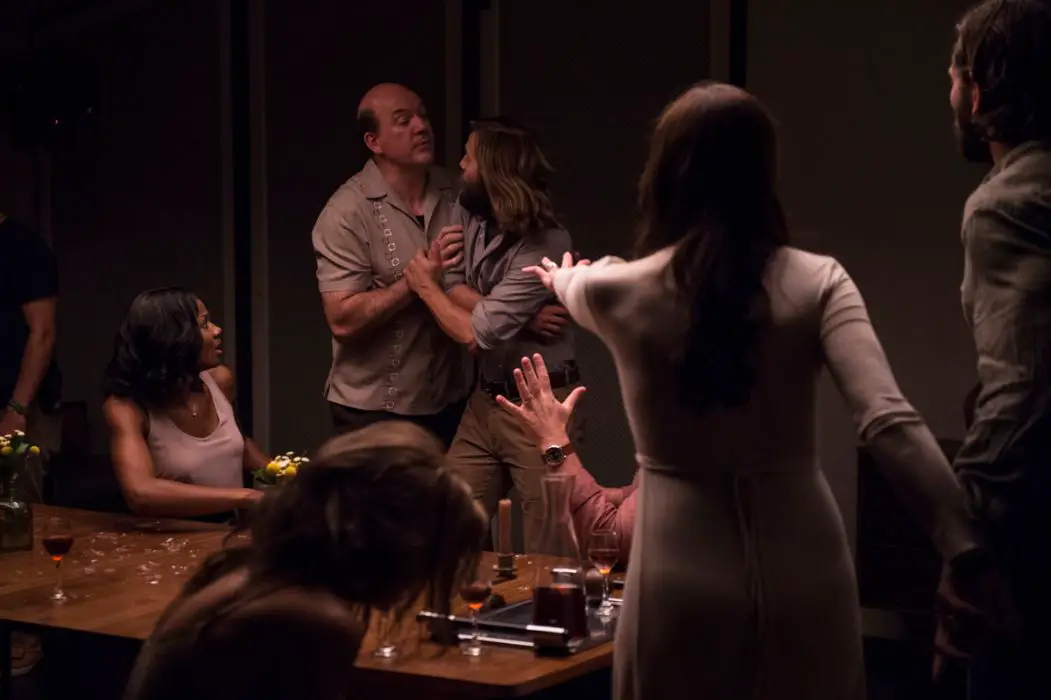
Ivy is a freelance writer and film journalist in NYC…
The universal attraction to horror is a complex, rich, and dynamic brew. Dr. Glenn D. Walters identified the primary motivations behind the drive to watch scary movies: tension, relevance and unrealism. Tension is created through suspense, terror, gore, mystery and shock. It inspires the desire to be transformed emotionally. Relevance applies to universal fears (fear of death), issues that a society fears (world-wide plague), or identification with the protagonist (overcoming a traumatic event). Unrealism creates perspective from terrifying situations that ironically allow a closer look at the nature of our fears.
Psychological horror is a sub-genre that focuses on the darker side of the human psyche that’s often repressed. It also explores emotional and psychological vulnerabilities over primal survival fears. These films are designed to be more like vivid nightmares, sending the conscious mind an important message or warning of something that hasn’t been acknowledged. These films can also reflect breaking thru social norms to uncover vital aspects of the psyche that are culturally rejected.
What Is Psychological Horror?
In psychological horror, suspicion, distrust, self-doubt and paranoia about oneself, others or the world are present. This is referred to in Jungian psychology as characteristics of the archetypal shadow. These are the emotional and mental fears that keep people up at night and evoke a sense of dread in everyday life.
This sub-genre reveals the complexity of human nature through the use of metaphor. Struggles with monsters, aliens, supernatural creatures are metaphors for emotional and psychological struggles. Characters are battling their own inner demons. Resolutions are complex, complicated, and unexpected. The villain may get away. The protagonist may have to learn how to live with a monster or disappear completely into madness. These films are often light on gore and “I couldn’t sleep alone for a week!” scares. They rely more on atmosphere, subtle creepy details, suggestion, and ambiguity.
Plot twists are an important element. Surprise is used to deepen exploration of the film’s theme. Traditional horror often follows the straight line of a fight for survival. In psychological horror, what’s terrifying is understanding why everything is not what it seems.
Processing the experience of death is a major theme in psychological horror, especially when it’s against societal or familial expectations. This type of horror creeps up where reality and taboo meet. Humans are a mixture of primal truths and social conditioning. Psychological horror explores what’s created when there is a disastrous dissidence between these expectations and the natural stages of grief. Ghosts in this sub-genre are looking for complex things. The undead represent the physiological experience of being physically alive but animated by a force that is void of humanity. Protagonists are often the dead or undead, lending to exploration of their psyche.
The following films are great examples of psychological horror.
The Invitation (2015, Karyn Kusama)
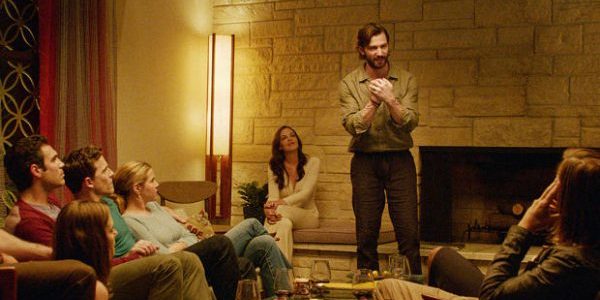
For The Invitation, Director Karyn Kusama (Jennifer’s Body, Girlfight), brings together an exceptional cast for this indie hit. Will (Logan Marshall-Green) and his new girlfriend Kita (Emayatzy Corinealdi) are invited to the engagement party of his ex-wife, Eden (Tammy Blanchard) and David (Michiel Huisman). Will and Eden’s son died in an accident in the backyard a few years ago and Eden still lives in the old house. Will arrives for the first time since the tragedy into a once beloved group of friends.
Kusama uses ambiguity and subtlety masterfully to create scenes in the beginning with seemingly open-ended interpretation. David locks all the doors and Will argues with him about it. Eden exudes profound inner peace but suddenly slaps a friend across the face for disagreeing with her. The hosts invite everyone to play provocative party games that Will finds offensive.
A video is played to invite guests to an organization that facilities people transcending grief and Will’s suspicion about the evening begins to unravel him. Are Will’s dramatic, disturbed responses to the seemingly benign evening a result of loosing his mind with grief? Or, does his willingness to be authentic about his mourning make him the most grounded person in the room?
The Invitation explores the heart of grief and the disastrous results of hijacking being present in it. It pits two opposite ways of dealing with tragic loss against one another, and while the results are theatrical, the sentiment isn’t. The symbolism of Eden’s wardrobe is powerful: her long white ceremonial type dress and the particular way she destroys it in the end.
The Invitation delves deeply into fundamental questions about the value of emotional sobriety, the dangers of forcing happiness, and the power of respecting one’s most authentic emotional terrain.
The Shining (1980, Stanley Kubrick)
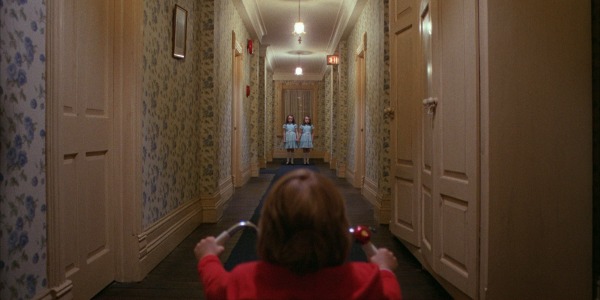
Kubrick‘s classic, The Shining, brilliantly captures a staggering range of themes, taking on alcoholism, domestic violence, and child abuse. It explores the struggle to overcome fears and weaknesses. It delves deeply into the challenges of wrestling with creating a creatively driven life in the face of one’s own personal demons. It articulates the dangers of extreme isolation. On the surface, it’s a fantastically creepy ghost story. Go no further and it’s easy to understand why it’s considered one of the best horror films ever made.
In traditional horror films, the audience knows more than the characters do about what’s around the next bend. In The Shining every danger is clearly spelled out to Jack Torrance (Jack Nicolson) in the first few minutes of the film. He’s told that the former employee cracked under the extreme isolation and murdered his wife and children. Danny (Danny Lloyd), Jack’s son, offers clear warnings but is blatantly ignored. Wendy Torrance (Shelley Duvall) minimizes Jack dislocating Danny’s arm in a drunken rage.
The tense, bickering ride to the isolated Overlook Hotel foretells how fractured and ill-equipped the family is for this place even before arriving there. In most horror films, characters don’t discover the monsters until it’s too late. In this psychological horror classic, the characters are told everything that could go wrong.
The complexity of the human psyche is then the downfall of these characters. Jack is portrayed as already a broken man trying to fix his broken life in the most dangerous and heedless way possible. This kind of plot twist is key in psycholgical horror. It’s terrifying because the audience quickly begins to see it’s Jack who’s the monster, not any spooks around the corner.
An American Werewolf In London (1981, Jonathan Landis)
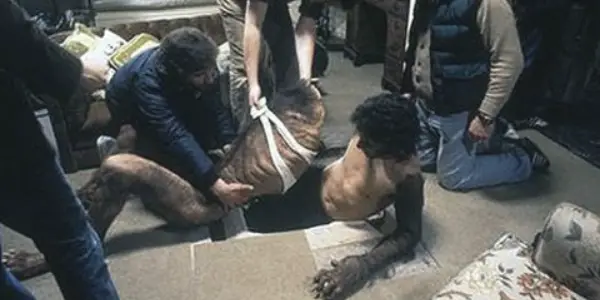
An American Werewolf In London is the legendary Jonathan Landis’s smart, irreverent and terrifying masterpiece. It’s tough to make a horror film that’s funny but also scary in a profound way but Landis nails it. The sexy, tongue-in-cheek soundtrack keeps the depth of the story fresh.
David Kessler (David Naughton) and Jack Goodman (Griffin Dunne) are college students back-packing in England. On a full moon in a tiny village, they are attacked by a werewolf. Jack is killed (but not truly dead) and David is bitten, enslaving him to his fate to become a werewolf.
Like vampires, werewolves can be scary for different reasons. They are often portrayed as sexy, radiating animal magnetism. But Landis uses metaphor and plot twist to explore deeper themes. While David gets in touch with a heightened primal desire, he isn’t a sexy werewolf at all and his transformation is gruesome and agonizing.
There is a key scene where David has an intervention of sorts, forced to face everyone he has killed so far as werewolf and his impact on them. Alex Price (Jenny Agutter) is the nurse who falls in love with him, who’s portrayed as devastated not that he’s a werewolf but that the man she loves is doomed.
What’s fascinating about Landis’s werewolf is that being this animal doesn’t get him more in touch with some true animal nature. His cries aren’t alluring howls, they are tortured cries. This transformation doesn’t make him into something closer to nature. It’s actual distance from anything natural makes the experience a true crisis for David.
Dracula (1931, Tod Browning, Karl Freund)
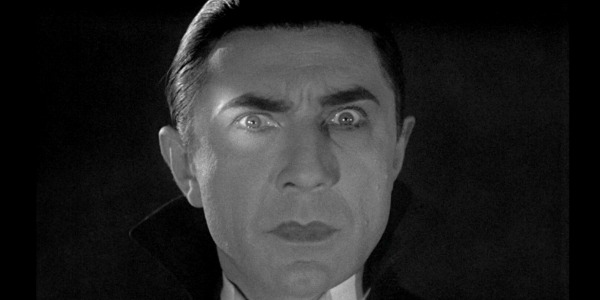
Vampires enjoy a special place in horror films. From Buffy The Vampire Slayer to Twilight to Nosferatu to Only Lovers Left Alive to Blade, the vampire myth is many-faceted and all of them are applicable. Vampire films are one of the best sub-genres to explore from a psychological horror perspective because the vampire is usually the metaphor.
The 1931 pre-code Dracula though is my favorite. Bela Lugosi created the iconic Count Dracula, a character who caused such terror in its 1931 release that film-goers fainted with fright. His overpowering magnetic presence was something never depicted on-screen before and seared itself into the collective psyche of essential horror characters.
The Count desires to move from Transylvania to London and hypnotizes a young realtor, Renfield (Dwight Frye), into taking care of all the vital details. The Count quickly inserts himself into London nightlife, where he falls for Mina (Helen Chandler) while attending an Opera. He sneaks into her room at night and bites her just enough to began to turn her into a vampire. Professor Van Helsing (Edward Van Sloan) exposes Count’s true nature, murdering him, and returning Mina to her original state.
In traditional horror films, the antagonist brings no positive results to its victims. The focus is usually on the race to eliminate the blood-thirsty creature. Dracula, though, portrays Mina as having a positive experience from her encounter with being bitten. Mina begins relating to her everyday life in a completely different way.
After Mina is bitten by Dracula, she shocks her fiancé with her new magnetic allure. The bite is intensely pleasurable and dream-like. The night that was once feared becomes a space she luxuriates in. The things that go bump in the night are desirable, comfortable and appealing to Mina. She enjoys the new person she has become.
Metaphor can be spotted in horror when a character that is usually portrayed in one way either acts differently or affects others in an unusual way. Dracula can change at will into a bat, which isn’t portrayed as specifically dangerous. This can symbolize an ease with one’s animal nature. Also, the bat’s sonar vision highlights the vampire’s proficiency with navigating other realms and embodying a radically different way of being in the world at will.
Because Mina enjoyed her new self, her return to her former self once Dracula is killed is a more complicated ending. I can’t help fantasizing that Mina still has that dark sparkle in her eye after returning to her sedate life, changed by the bite of true desire forever.
Psycho (1960, Alfred Hitchc*ck)
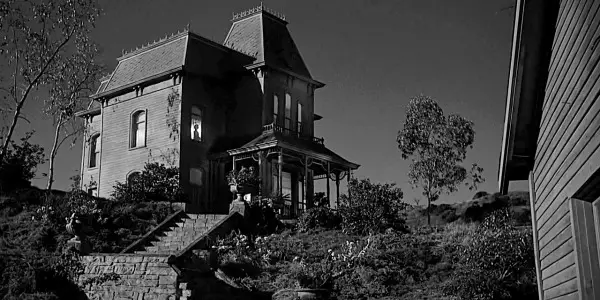
It’s impossible to study psychological horror without including Hitchc*ck, one of its most prolific masters. Psycho is considered by many to be one of the greatest film of all time. The US Library of Congress in 1992 declared the film “culturally, historically, and aesthetically significant” and selected it for preservation in the National Film Registry. It transformed the level of acceptability for sexuality, violence and deviant behavior in American films. Hitchc*ck produced and financed the film himself after the studio called it “too repulsive” to make.
Marion (Janet Leigh) is running from the law after stealing $40,000 from her employer to start a new life with her boyfriend, Sam (John Gavin). She ducks into the Bates Motel, run by Norman Bates (Anthony Perkins). Marion overhears a heated argument between Norman and his mother, who he complained is mentally ill and radically overbearing.
In psychological horror, the smallest details often turn out to be the most significant. She is soon murdered in the famous shower scene seemingly by an elderly woman with a big knife. It’s soon revealed that Norman keeps his Mother’s mummified body in the house fully dressed for him to talk with.
By showing Bates peeking at her undressing and Norman’s arguments with his mother about another woman around, Hitchc*ck created an environment where the problems are psychological. With an incestuously charged relationship during Norman’s upbringing, he fully becomes his mother to murder women he’s sexually attracted to. Talk about a plot twist!
This is a psychological horror film distilled down to its essence. Only a human being could fracture in this way. Hitchc*ck portrayed radically deviant physiological sickness as a classic horror film. The amount of literature on the psychoanalytical significance of Psycho is well-worth checking out.
The Bates Motel is also a stellar prequel TV series that astutely explores the wildly dysfunctional relationship between mother and son. Hitchc*ck is a narrative film that delves into Alfred’s own complicated psyche in regards to women and how he used film to mirror the inner demons he wrestled with.
What Lies Beneath (2000, Robert Zemeckis)

Ghosts play a rich role in the psychological horror genre. They often represent those pesky dark deeds that people wish could be forgotten but shouldn’t be. There are many great films portraying ghosts as benign spirits desperate to bring human horrors to light for justice and completion.
What Lies Beneath has a great, unique spin on that theme. This elegant, stylish horror film belongs to Michelle Pieffer. Claire is being haunted by a female ghost (Katharine Towne) that’s desperate to communicate vital information about her husband Dr. Norman Spencer (Harrison Ford).
The ghost never hurts her. Instead a picture of her husband is continually knocked over in a way that reveals hidden information. A computer screen is filled with just someone’s initials. Claire’s encounter with the ghost only leads to clues. This reflects those forces in our lives that are only frightening because they bring truths that are life-shattering to face.
Psychological horror ghost stories can be distinguished by a focus on the ghost’s point of view, especially when it has suffered injustice as a human being. With the realities the ghost brings to light about Norman, Claire becomes more interested in bringing the ghost’s spirit to rest than protecting her husband’s cruel secret.
Rather than a tired portrayal of the evil, witchy other woman who must be destroyed for order to be restored, Claire befriends the ghost with compassion. Together they create a powerful resolution that saves Claire’s life and allows the departed to rest in peace.
Goodnight Mommy (2014, Veronika Franz, Severin Fiala)

This Austrian Indie hit is actually not light on gore for a few key scenes, causing people to flee the theater. But, it’s brilliant. Elias and Lukas (Elias and Lukas Schwartz) are twin brothers whose mother (Susanne Wuest) has returned from dramatic plastic surgery. Aside from her entire face completely obscured with heavy bandages, her personality and relationship to her children has altered so dramatically they are convinced she is actually an impostor.
From their point of view, the past warm, loving, attentive mother against the rageful, distant and seemingly brutal woman keeps the identity of the woman a mystery. She ignores Luke and punishes Elias. Suspecting this the woman is possibly alien or supernatural, they begin testing her and sleeping in shifts with a cross bow c*cked.
Goodnight Mommy has a major plot twist. It’s revealed in the second half of the film Elias has Capgras Syndrome, a disorder where a person is convinced a loved one has been replaced by an identical looking impostor. By the end, a big twist is revealed and the point of view changes to that of the mother, who is actually a shattered woman, trying to cope with her troubled son.
The truth allows the viewer to go back through every previous scene and view the mother with profound empathy. The dramatic plastic surgery had been an attempt to reinvent herself but she is still not able to function under the weight of so much tragedy. The focus of terror jack-knifes to a son whose completely terrorizing his mother, who’s dealing with her own issues, too.
By creating such a dramatic shift in point of view, the viewer has to rethink every previous scene. If the children were just battling an imposter, the conclusion would be either winning or loosing that battle. By switching who the victim is mid-film, the directors create a complex exploration of suffering.
They Look Like People (2015, Perry Blackshear)
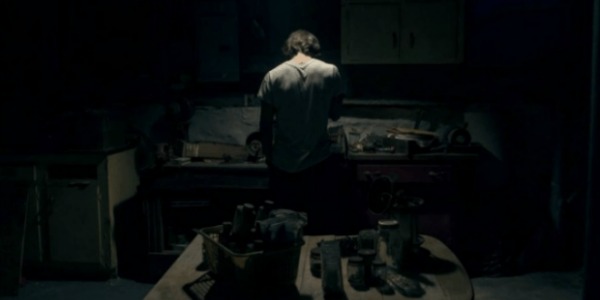
They Look Like People is a profoundly accurate portrayal of how terrifying it can be to live with paranoid schizophrenia. This illness can create epic battles between good and evil, where loved ones can suddenly be perceived as threats to all of humanity. The complexity of having a deep authentic bond with someone whose mental illness can make them dangerous is also masterly captured.
Wyatt (Macleod Andrews) arrives at the door of his dearest friend, Christian (Evan Dumouchel), under mysterious circumstances. Wyatt is living inside this world where the apocalypse is coming and the demons can inhabit anyone. The courage to kill them, even if it’s a loved ones, is essential to the survival of humankind.
Creepy subtlety blurs the line between truth and fiction. The disembodied voice Wyatt hears is the same voice as Christian’s date. Shadows distort the faces of loved ones. Christian’s benign empowerment affirmation tapes against Wyatt’s ominous whisperings paint a stark contrast of two young men struggling in very different ways to discover what it means to be a man in modern America.
They Look Like People articulates the level of terror those suffering from this mental illness can live in on a daily basis and the unique kind of empathy this illness can bring out in people. It also delves deeply into the complexity of personal safety for everyone involved.
Usually, in horror films where the perpetrator is mentally ill, it’s a disconnected plot device, devoid of actual humanity. A paint-by-numbers mentally ill perpetrator is ironically less frightening than being put inside the head of someone who is in a dangerous and violent downward spin.
This is a surprisingly beautiful film, brilliantly filled with compassion, empathy, and humor within the most frightening scenes. They Look Like People plays right up to the end on whether or not Wyatt’s predictions are real and proves that fanatical belief can be far more frightening than actual monsters.
In conclusion, psychological horror films offer a unique way to articulate the human psyche. Other psychological horror classics to explore are Repulsion, The Sixth Sense, The Babadook, It Follows and Let The Right One In. Psychological horror can be a fun Rorschach Inkblot test.
These films create space to respect what viewers take away from the experience and the debates they spark are unique and enriching. Rather than heightening unrest, these films can be cathartic, insightful and liberating. Psychological horror challenges the repression of the darker aspects of the human experience. These films offer the opportunity to explore the deep complexity of human nature in all its manifestations.
What benefits have you found through watching your favorite psychological horror films?
Does content like this matter to you?
Become a Member and support film journalism. Unlock access to all of Film Inquiry`s great articles. Join a community of like-minded readers who are passionate about cinema - get access to our private members Network, give back to independent filmmakers, and more.
Ivy is a freelance writer and film journalist in NYC and LA. Her passion for film started when her family brought home the entire video store from one of their supermarket chains. Her main interests lie in psychological horror and women & cinema. Her work has appeared in Film Inquiry, PopOptique, & Sordid Cinema. She's also a Programmer for the Bushwick Film Festival. More of her work can be found @ thefilmremedy.com













